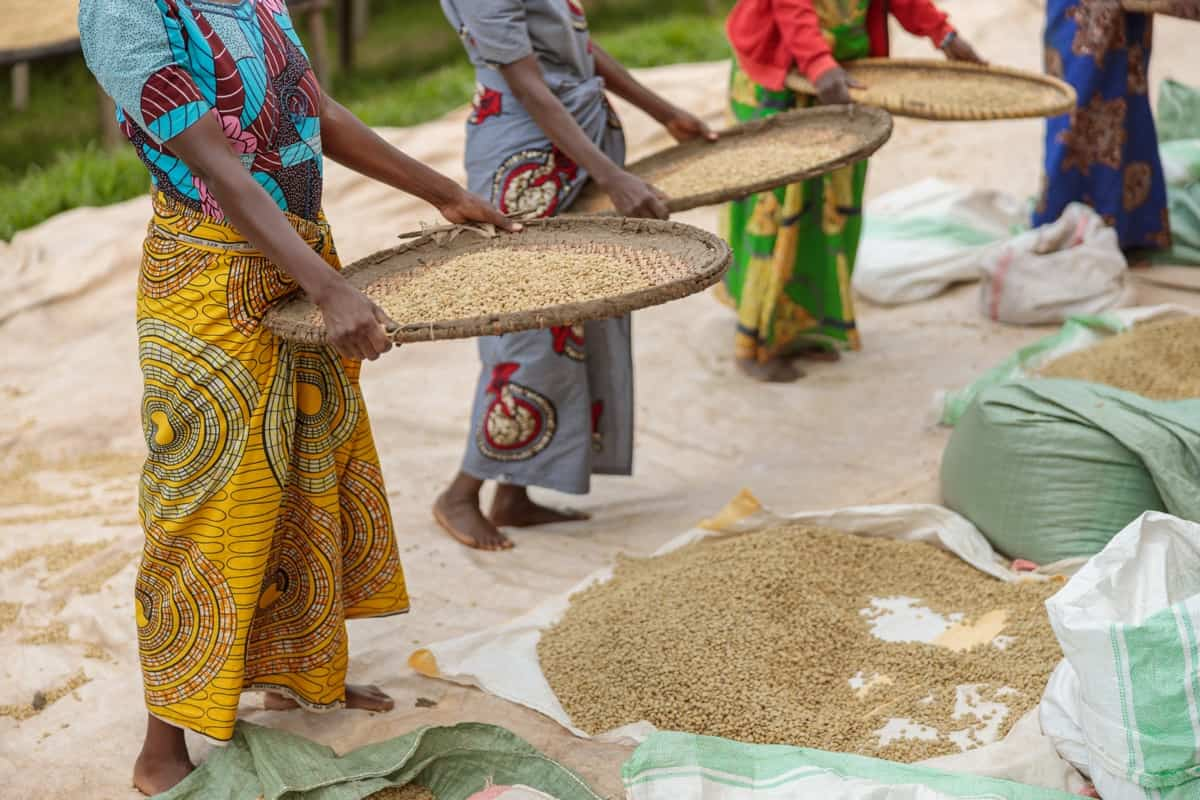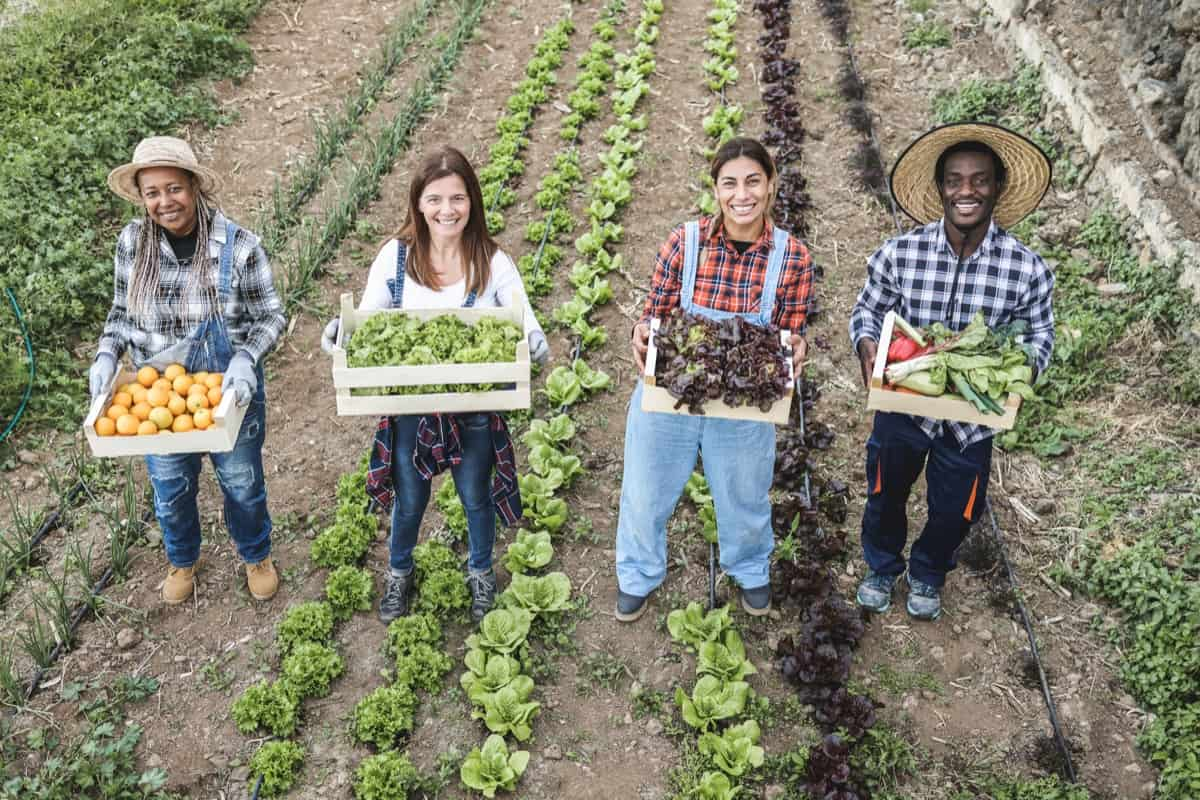Welcome to our blog on Cooperatives in Agriculture: Strengthening Local Economies and Empowering Farmers. We all want to know where and how our food is grown since we know consumers. However, did you know that there is a method for farmers to band together, take charge of their livelihoods, and boost the regional economy simultaneously? Agriculture cooperatives accomplish this.

We’ll go deeper into how cooperatives support local economies, empower farmers, and foster a more sustainable food system in this blog post. This post is for everyone who wants to understand more about how our food is grown, whether they are farmers, consumers, or just curious. So settle back, unwind, and get ready to see how effective cooperative agriculture is.
Cooperatives in Agriculture
What is cooperative agriculture?
A group of farmers joins together to pool their resources, such as land and machinery, and collaborate to cultivate and sell products in a manner known as cooperative farming. These farmers join a cooperative society, where every member has an equal say in decisions and the choice of officers. By uniting small properties and cultivating them collectively, cooperative farming aims to expand the size of the operational unit and gain from economies of scale.
The harvest is split among the members in proportion to the land and work each farmer contributed. Each cultivator keeps ownership of their land. Cooperative farming allows farmers to join an organization through which they can pool resources and knowledge, enabling them to produce better results—generally financial—than they might on their own.
What is the need for cooperative agriculture?
Cooperative farming is a significant agricultural revolution in India since it strives to protect farmers’ interests and give them more facilities and rewards. India is a largely dependent nation on agriculture, with 60% of its people being farmers and this industry accounting for most of its economic production.
In several states following independence, the agricultural industry has grown, but there were problems with agrarian laws before that. Integrating small farms into larger cooperative farms solves problems like land waste in small farms and boosts profitability. Small farms would not have been able to expand irrigation potential and land production alone; now, more resources, including men, materials, and money, can be utilized to do so.
Agriculture cooperatives’ contribution to rural development
Agricultural cooperatives significantly impact rural development since they are essential to creating enduring communities there. Agricultural cooperatives assist farmers in expanding their market reach so they may sell their products and purchase input materials at lower costs. It enhances economic growth and raises rural residents’ standard of living. Cooperatives provide for a range of rural communities needs.
Rural cooperatives can be established to meet needs for hardware, equipment, supplies for the home and workplace, and other things. They give small farmers a way to access resources and services that need to be more readily available. Cooperatives can also give farmers access to finance, which they can use to buy farming-related supplies and equipment.
In case you missed it: Integrated Organic Farming: A Holistic Approach to Agriculture

Cooperatives also contribute significantly to rural development by creating jobs. Cooperatives can boost productivity and efficiency by pooling resources and collaborating, which boosts farmer income and creates job possibilities for the neighborhood. It may aid in lowering poverty and raising rural dwellers’ living standards.
Features of cooperative agriculture
- Right of Ownership: Each member owns a certain plot of land and can exercise all rights until it is sold or privileges are taken away.
- Voluntary Member Contribution: Members can voluntarily contribute to using land for farming and opt out by selling or giving up their land for cash.
- Scalable farming model: Depending on how many plots are allotted to each member, the model can be scaled up or down.
- Proportionate Contributions and Rewards: Compensation and profits are based on the proportion of ownership and the amount of work done by each member.
Classification of cooperative agriculture
Type of organization
- Producer cooperatives: Organizations owned and controlled by farmers who produce agricultural products and share the benefits.
- Consumer cooperatives: Organizations owned and controlled by consumers who purchase agricultural products and share the benefits.
- Worker cooperatives: Organizations owned and controlled by the workers who provide services or produce goods.
Type of products or services
- Crop cooperatives: Cooperatives that produce or market specific crops such as grain, fruits, or vegetables.
- Livestock cooperatives: Cooperatives that produce or market specific livestock such as dairy, poultry, or beef.
- Supply cooperatives: Cooperatives that provide inputs and services such as fertilizer, seed, or equipment.
Stage of development
- Startup cooperatives: New cooperatives that are in the process of organizing and establishing their operations.
- Established cooperatives: Cooperatives that have already established their operations and have a stable membership and customer base.
- Developing cooperatives: Cooperatives that are expanding their operations and exploring new opportunities.
Type of ownership and business model
- Cooperative Collective Farming: The members jointly manage ownership and operations.
- Cooperative Tenant Farming: Operations are managed by each member individually, while ownership is managed by the members collectively.
- Cooperative Better Farming: Members independently oversee ownership and operations.
- Cooperative Joint Farming: Members individually handle ownership, but the group manages operations.
In case you missed it: Ways to Use Neem Oil in Plants: Benefits in Agriculture, Application Method in Garden, and Uses in Hydroponics

Benefits of cooperative agriculture
- Administrative Convenience
- Creditworthiness
- Marketable Surplus
- Release of Workers
- Social Arguments
- Great for Increasing Income
Cooperative Agriculture has many advantages, such as easier government administration, increased creditworthiness, and the capacity to sell surplus items for more money. It also fosters cooperation among society’s members by allowing workers to transfer from agricultural to non-agricultural operations. The income of marginal farmers in developing nations can be increased particularly effectively through cooperative farming.
Advantages of cooperative agriculture
A group of farmers got together to manage and run their farms as a collective is, known as cooperative farming. Compared to individual farming operations, it has many benefits, such as Greater farmer earnings, better services, and goods, cheaper costs for input suppliers, more competitive markets, democracy, and operational openness; Legal assistance and a part in rural development
- Increased Production: Farmers participating in cooperative farming have access to more land and resources, increasing production.
- Utilization of Unused Land: Due to the close confines of each field, individual farming may leave a significant amount of land unutilized. This issue is resolved by cooperative farming, which enables the land’s full potential.
- Improves Land Productivity: A higher per-acre yield is possible thanks to cooperative farming’s ability to pool resources like irrigation systems and land productivity.
- Large-Scale Farming Benefits: By combining small and marginal farms, cooperative farming enables farmers to benefit from large-scale benefits like cheaper input costs and access to heavy equipment.
- Opportunities for Jobs: Many unemployed people may find employment through cooperative farming.
In case you missed it: 10 Practical Applications of AI in Agriculture: Impacts and Benefits of Crop Health and Yield

How can individual farmers benefit from agricultural cooperatives?
By collectively enabling them to control supply and marketing channels, agricultural cooperatives support individual farmers by enabling them to buy input supplies at lower rates and offer their goods and services at greater prices in bigger markets. Due to their increased competitiveness and marketability, struggling farmers benefit. In general, collaboration helps farmers use fewer resources to do more.
Important variations in cooperative agriculture
- Cooperative Joint Farming Organization: Every task is carried out cooperatively in this society, from crop preparation to planting to marketing.
- Cooperative Better Farming Society: Members of this organization maintain their individual farm plots separately but collaborate on other activities, including gathering seeds and fertilizer and collaboratively storing crops.
- Cooperative Tenant Farming Society: This organization leases members of land it has purchased or rented.
- Cooperative Collective Farming Group: Members are unable to emigrate by selling their farms because the society permanently owns the land. It will instead be granted to another member for usage.
How do agricultural cooperatives work?
- Agricultural cooperatives allow individual farmers to buy supplies jointly at wholesale discounts and sell their goods at large markets.
- It allows for more efficient and profitable farming.
Rural cooperative principles
- Agricultural cooperatives are distinguished by principles such as self-help, self-ownership, voluntary membership, transparency, and autonomy.
Agricultural cooperatives structure
- The structure of agricultural cooperatives can vary depending on the number of members and the territory they cover.
- Types of cooperatives include local and regional, centralized, federated, and mixed.
- Local cooperatives typically consist of several hundred members. In contrast, regional cooperatives can include thousands of members and operate on a larger scale.
Challenges in agricultural cooperative
Agricultural cooperatives can face challenges. Rising expenses, poor marketing skills, conflicts and lack of understanding among members, low financial sustainability, labor shortage, and low adoption of precision agriculture technologies are all challenges that agricultural cooperatives may face. Farmers’ input costs rise along with corporate operating expenses.
Attachment with land
Farmers have a strong attachment to their land and are unwilling to give it up for the good of society.
In case you missed it: Perlite Uses in Agriculture – Application Methods, When to Use and How to Use

Lack of cooperative spirit
- Farmers tend to lack a cooperative and friendly spirit and are separated into various sections based on caste.
- There needs to be more unity among farmers, making it difficult for them to join society.
Illiteracy
- Many farmers in developing nations need to be more educated and resistant to changes in farming techniques.
- They may continue to use traditional methods.
Lack of capital
- Cooperative farming groups may need more capital to keep up with the demands of agriculture.
- Limited credit options may also be a challenge.
Dishonesty
- Cooperative management may need to be more honest, rendering the cooperative farming society ineffective.
- Members may be self-centered, leading to the failure of society.
Loss of independence
- Farmers who practice cooperative farming may experience a loss of independence in their business, which can be challenging to accept.
Repayment of debt
- Failure to pay off debt on time can cause financial institutions problems.
- Team members may need help understanding their responsibilities, leading to failure.
Cooperative agriculture in India
In India, networks of cooperatives at the local, regional, state, and national levels support selling agricultural goods. The most common commodities handled are food grains, jute, cotton, sugar, milk, and nuts.
Agriculture cooperative in the dairy sector in India
Due to the popularity of the Anand Pattern, a dairy farming model that uses a single marketing cooperative, India produces the most milk in the world. Small, marginal farmers who own the cooperative and the brand and receive three-fourths of consumer prices are the model’s primary workers.
Farmers’ milk is gathered twice daily, processed in district unions, and then marketed across the country under the Amul brand. The cooperative hires experts and uses state-of-the-art research labs, cutting-edge processing facilities, and cold-chain transportation methods to guarantee quality and increase the value of the milk. India’s largest rural employer and independent company are thought to be the Anand Pattern.
Agriculture cooperative in sugarcane in India
The majority of sugar from sugarcane is produced at cooperative sugar cane mills controlled by local farmers, where all small and large farmers who provide sugarcane to the mill are shareholders. These mills have been an important stepping stone for prospective politicians. They have promoted rural political engagement over the past 60 years. However, some of these operations have been rendered ineffective due to poor management and the abuse of collective ideals.
In case you missed it: How to Solve the Challenges of Urban Agriculture/Farming/Gardening

Agriculture cooperative in the foodgrains sector in India
In India, agricultural cooperatives are essential because they enable farmers to raise their output and revenue through cooperative activity. These cooperatives give farmers access to loans, market data, and contemporary technology. By combining their resources and negotiating power, they also assist farmers in obtaining higher prices for their goods.
The National Cooperative Development Corporation (NCDC), the National Cooperative Union of India (NCUI), and the National Cooperative Agriculture and Rural Development Banks are a few instances of agriculture cooperatives in India’s food grains industry (NCARDBs).
Cooperative farming’s contribution to agricultural advancement and food security
To boost small-scale farmers’ yields, sales, and profits, cooperative farming offers them possibilities and services essential to agricultural development and food security. Through pursuits like forestry, livestock, aviculture, and fisheries, it also supports national income.
Small agricultural producers benefit from cooperative farming because it helps them protect their livelihoods and meet the rising demand for food. Additionally, it aids in the reduction of hunger and poverty. Farmers can unite through cooperative farming to speak out for their needs and obtain lower-cost services.
Conclusion
Agriculture cooperatives may be a powerful tool for empowering farmers and boosting regional economies. Cooperatives can give farmers more negotiating leverage, access to new markets and technology, and cost savings by pooling their resources and expertise.
Cooperatives can also give farmers access to resources like technical support, loans, and other tools that can boost their businesses’ productivity and profitability. In general, cooperatives can help maintain resilient and sustainable agricultural systems, especially in rural areas where farmers may find it difficult to compete with more giant agribusinesses.
- How to Make Houseplants Bushy: Effective Tips and Ideas
- Innovative Strategies for Boosting Coconut Pollination and Yield
- Pollination Strategies for Maximum Pumpkin Yield
- The Complete Guide to Chicken Fattening: Strategies for Maximum Growth
- Natural Solutions for Tulip Problems: 100% Effective Remedies for Leaf and Bulb-Related Issues
- Revolutionizing Citrus Preservation: Towards a Healthier, Greener Future
- Natural Solutions for Peony Leaf and Flower Problems: 100% Effective Remedies
- Maximizing Profits with Avocado Contract Farming in India: A Comprehensive Guide
- Natural Solutions for Hydrangea Problems: 100% Effective Remedies for Leaf and Flowers
- The Ultimate Guide to Choosing the Perfect Foliage Friend: Bringing Life Indoors
- From Sunlight to Sustainability: 15 Ways to Use Solar Technology in Agriculture
- The Ultimate Guide to Dong Tao Chicken: Exploring from History to Raising
- The Eco-Friendly Makeover: How to Convert Your Unused Swimming Pool into a Fish Pond
- Mastering the Art of Delaware Chicken Farming: Essentials for Healthy Backyard Flocks
- 20 Best Homemade Fertilizers for Money Plant: DIY Recipes and Application Methods
- How to Craft a Comprehensive Free-Range Chicken Farming Business Plan
- Brighten Your Flock: Raising Easter Egger Chickens for Beauty and Bounty
- How to Optimize Your Poultry Egg Farm Business Plan with These Strategies
- Subsidy for Spirulina Cultivation: How Indian Government Schemes Encouraging Spirulina Farmers
- Ultimate Guide to Raising Dominique Chickens: Breeding, Feeding, Egg-Production, and Care
- Mastering the Art of Raising Jersey Giant Chickens: Care, Feeding, and More
- Ultimate Guide to Raising Legbar Chickens: Breeding, Farming Practices, Diet, Egg-Production
- How to Raise Welsummer Chickens: A Comprehensive Guide for Beginners
- How to Protect Indoor Plants in Winter: A Comprehensive Guide
- Ultimate Guide to Grow Bag Gardening: Tips, Tricks, and Planting Ideas for Urban Gardeners
- Guide to Lotus Cultivation: How to Propagate, Plant, Grow, Care, Cost, and Profit
- Agriculture Drone Subsidy Scheme: Government Kisan Subsidy, License, and How to Apply Online
- Ultimate Guide to Raising Araucana Chickens: Breed Profile, Farming Economics, Diet, and Care
- Bringing Hydroponics to Classroom: Importance, Benefits of Learning for School Students
- Ultimate Guide to Raising Polish Chickens: Breed Profile, Farming Economics, Diet, and Care
- Ultimate Guide to Raising Australorp Chickens: Profile, Farming Economics, Egg Production, Diet, and Care
- Silkie Chicken Farming: Raising Practices, Varieties, Egg Production, Diet, and Care
- Sussex Chicken Farming: Raising Practices, Varieties, Egg Production, Diet and Care
- Homemade Feed Formulations for Livestock: Discover Cost-effective Starter to Finisher Feed Recipes
- 20 Best Pig Weight Gain Supplements: Top Swine Weight Gain Formulas
- Ultimate Guide to Elderberry Farming: Propagation, Planting, Yield, Cost, and Profit